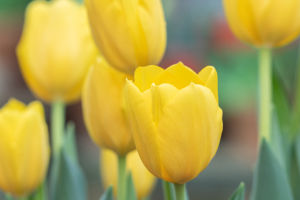Peony flowers are gorgeous and diverse in variety, often planted in clusters in gardens, creating a spectacular display when in bloom, making them prominent flowers in modern parks or flower beds.
They are often planted along pathways or roadsides, or cultivated on the edges of woodlands, accompanied by low-growing, creeping flowers.
What is the language of peony flowers?
The language of peony flowers - lingering affection, difficult to part with, sincere and unchanging.
In ancient times, peonies were exchanged between men and women to express the commitment of friendship or the feeling of reluctance to part.
The symbolic meaning of peonies: They symbolize shyness and longing, representing wealth and beauty.
In ancient Western culture, there is a legend that the wise Greek physician Asclepius had a clever student named Peion, who even cured the wounds of the god of the underworld, Hades. Out of jealousy, Asclepius killed Peion. Fortunately, Hades, remembering the kindness, transformed Peion into a healing flower, namely the peony.
Westerners have always believed that peonies have a certain magical power; wherever peonies grow, demons will disappear without a trace, and they can even counteract the poisonous effects of flowers like mandrakes.
Methods of planting peonies:
1. Soil: Peonies are deep-rooted plants and require deep, loose, and well-drained sandy loam soil.
They grow poorly in clay and sandy soils with high water content and poor drainage, which can easily lead to root rot. Neutral or slightly acidic soil is preferable, and saline-alkali land is not suitable for planting.
2. Watering:
Peonies prefer high and dry environments and do not require frequent irrigation. Peonies are particularly intolerant to waterlogging. Standing water for 6 to 10 hours often leads to root rot.
3. Sunlight:
Peonies require ample sunlight during their growth period to grow lush and colorful flowers. However, they can also grow normally under light shade.
During the flowering period, shading can reduce temperature and increase humidity, protecting them from sunburn and prolonging the viewing period. However, excessive shading can cause elongation of stems, weaken growth, and result in no or sparse flowering.
4. Temperature:
Peonies are typical temperate plants, resistant to warm and cold temperatures. They can safely survive extreme summer temperatures of up to 42.1°C and continue to grow and bloom normally under extreme winter temperatures as low as -46.5°C, even overwintering outdoors.
5. Fertilization:
Peonies thrive with ample fertilizer, and excessive fertilization is rare. Particularly when flower buds are transparent and during bud formation, the demand for nutrients is more urgent.
In addition to applying base fertilizer during planting, supplementary fertilization can be applied three times a year according to the different nutrient requirements of peonies during different growth periods.
6. Pests and diseases:
Common diseases of peonies include brown spot disease and root rot, while common pests include red spider mites and aphids. Brown spot disease can be prevented and controlled by spraying with a 0.5% Bordeaux mixture or 65% zinc dimethyl dithiocarbamate powder 800 times solution.
Pests such as red spider mites can be controlled by spraying with a 40% trichlorfon emulsion 2000 times solution, a 40% oxymetholone emulsion 3000 times solution, or an 80% dichlorvos emulsion 2000 times solution.
7. Pruning:
To ensure that peony flowers are large and beautiful, side buds should be removed promptly after they appear so that nutrients can be concentrated on the main buds to achieve the desired effect.


